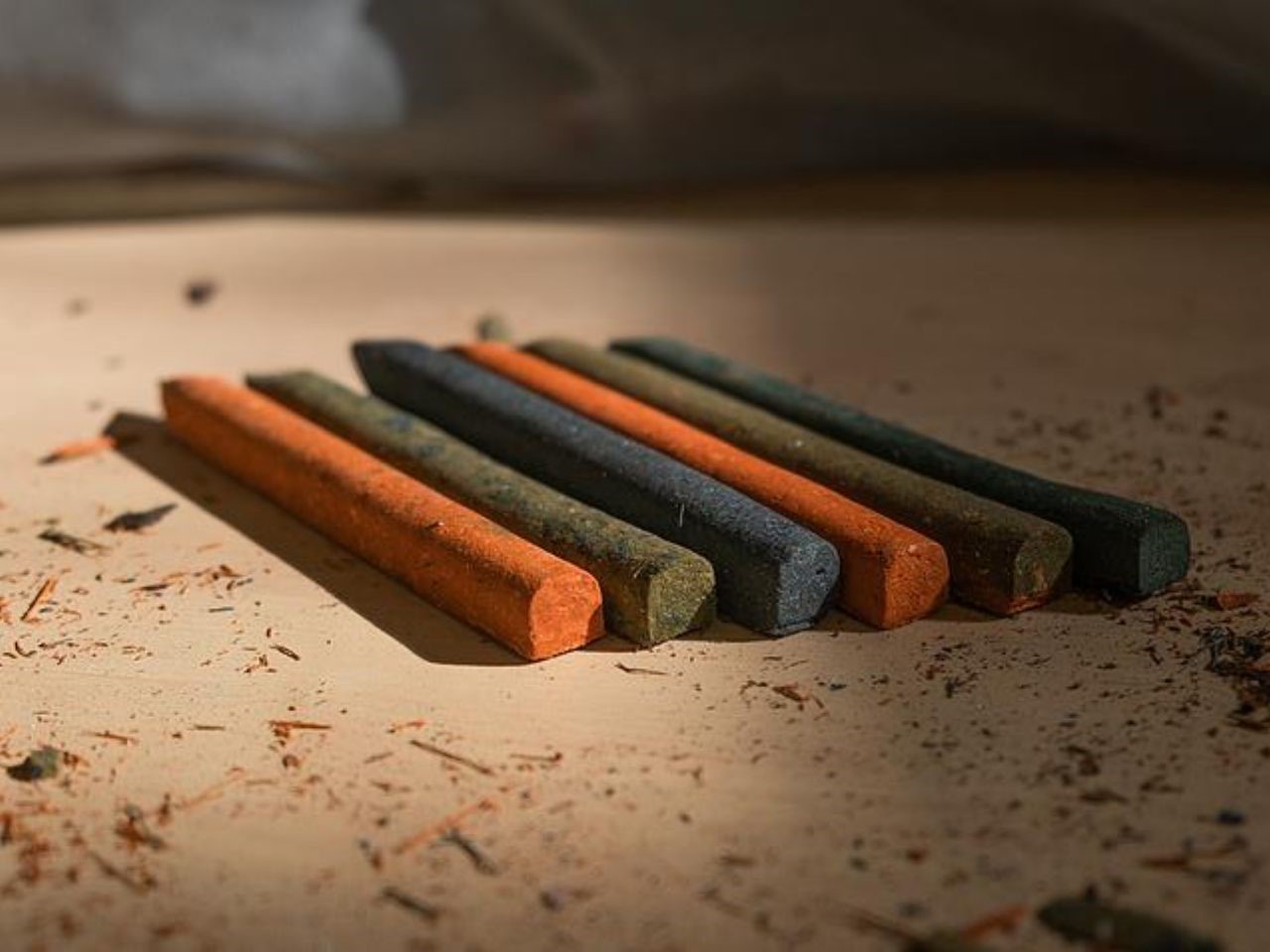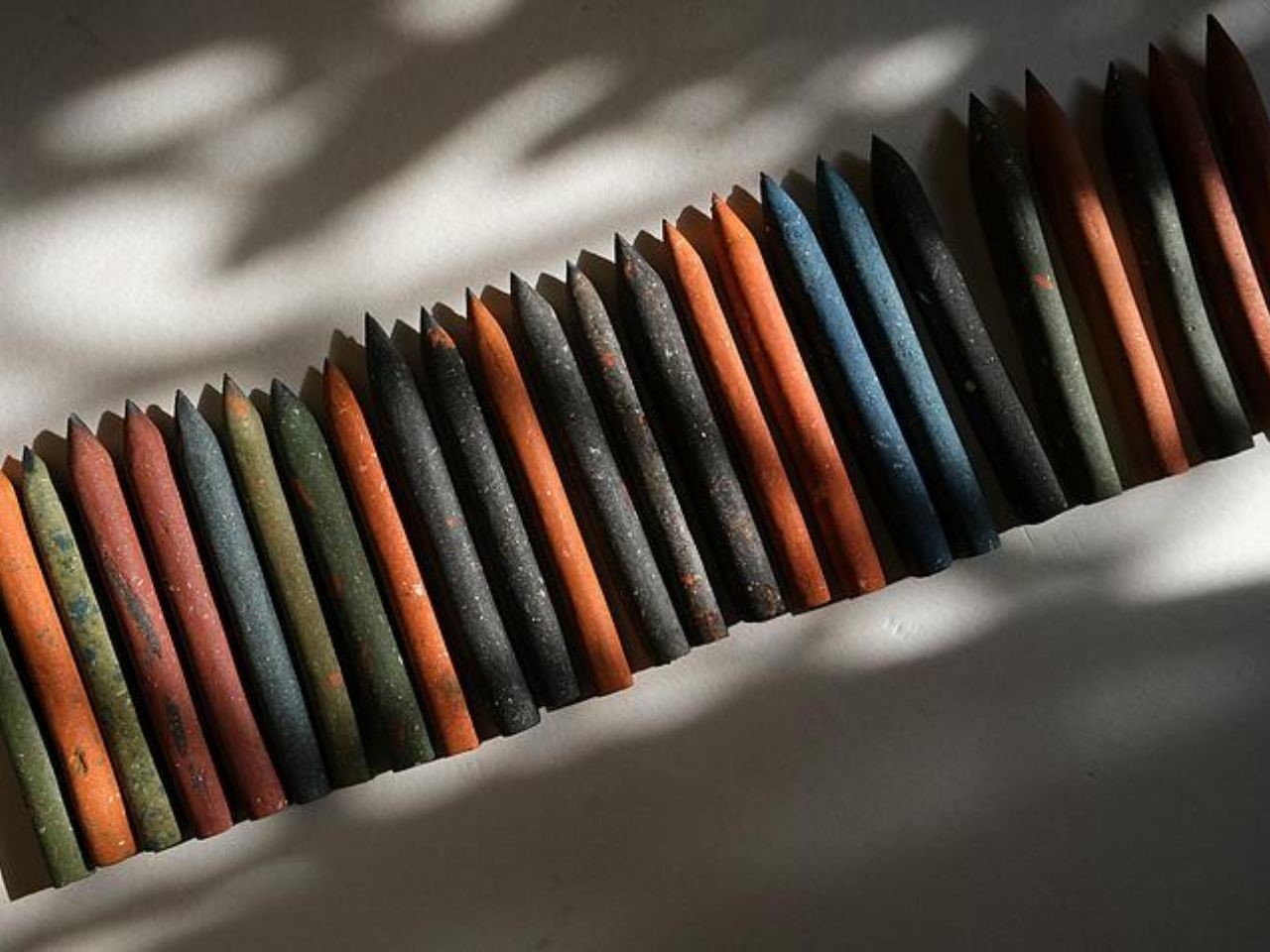This Sustainable Sawdust Pencil Transforms Carpentry Waste Into Pure Creativity


The Sakeb Carpenter’s Pencil is a carefully considered reinterpretation of the traditional carpenter’s pencil, designed with sustainability and cultural heritage at its foundation. Inspired by local craftsmanship and grounded in environmental responsibility, it reflects a deep respect for materials, making processes, and the people behind them.
Visually, the pencil holds onto a raw, dusty appearance that mirrors the environment in which it was conceived. Its texture and finish feel unrefined in an intentional way, aligning with the aesthetics of a workshop rather than a design studio. Interestingly, their matte texture and chunky form give them an almost crayon-like appearance, playful yet practical, inviting users to engage with them in an intuitive and creative way. This authenticity reinforces the pencil’s identity as a working tool rooted in tradition.
Designer: Raghad Saqfalhait and Mariam Dahabreh


Made from recycled sawdust and bio-based binders, the pencil is a direct response to waste generated in woodworking. The sawdust, collected from Palestinian carpentry workshops, is transformed into a usable material that forms the body of the pencil. This approach not only repurposes discarded material but establishes a cyclical process: once the pencil is used, it can be melted and recast—even using its own shavings. This allows the pencil to be continuously reused, extending its lifespan and reducing waste throughout its lifecycle.


The pencil’s form follows its function and context. It is thicker than standard pencils, mirroring the proportions of traditional carpenter’s tools. While this may appear unconventional at first, the thicker body serves a clear purpose. It enables users to make bold marks, shade broad areas, and focus on larger ideas, especially useful during the early phases of ideation or sketching. For carpenters and designers alike, the pencil supports a mindset focused on the overall picture rather than small details.
Each Sakeb Carpenter’s Pencil is handcrafted, a deliberate choice that embraces analog production methods. This process ensures that no two pencils are identical. The uniqueness of each piece reflects the individuality of the makers and the variability of natural materials. It also connects users to a slower, more intentional form of production, contrasting with mass-manufactured tools that often lack a personal touch.


Even the act of sharpening the pencil draws from carpentry. Instead of using a conventional sharpener, users file the pencil using sandpaper. This method complements the nature of the material and reinforces its connection to woodworking practices. It becomes a subtle ritual that ties the pencil to the tools and techniques used by the carpenters whose waste materials helped create it.
Visually, the pencil holds onto a raw, dusty appearance that mirrors the environment in which it was conceived. Its texture and finish feel unrefined in an intentional way, aligning with the aesthetics of a workshop rather than a design studio. This authenticity reinforces the pencil’s identity as a working tool rooted in tradition.


Tanvi Joshi
If you liked the article, do not forget to share it with your friends. Follow us on Google News too, click on the star and choose us from your favorites.
If you want to read more like this article, you can visit our Technology category.



